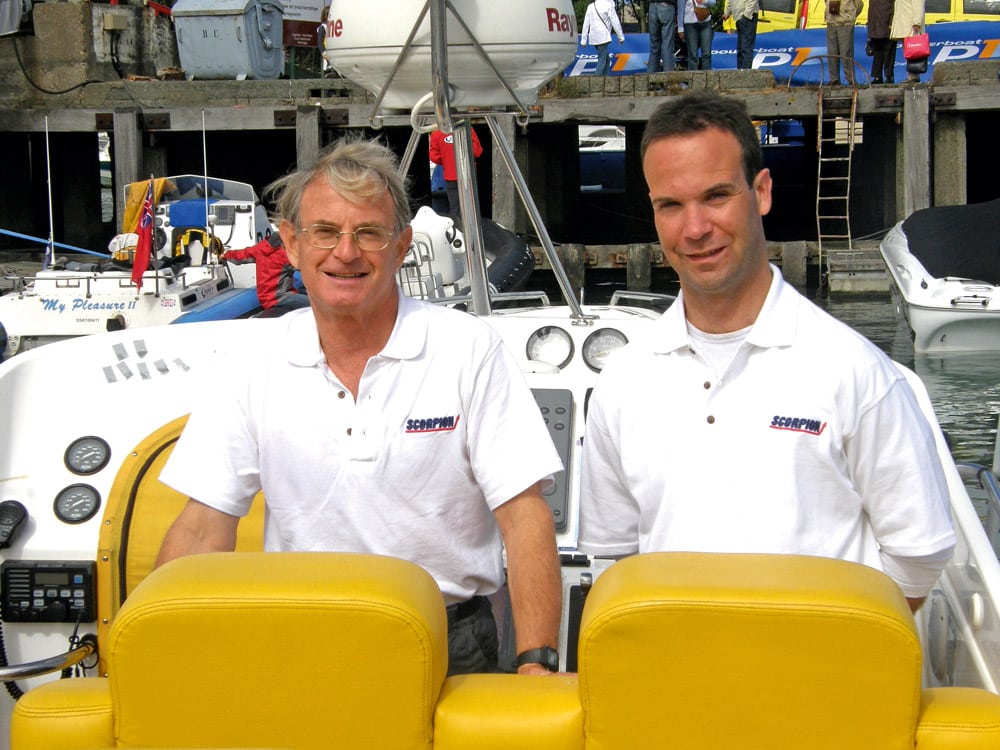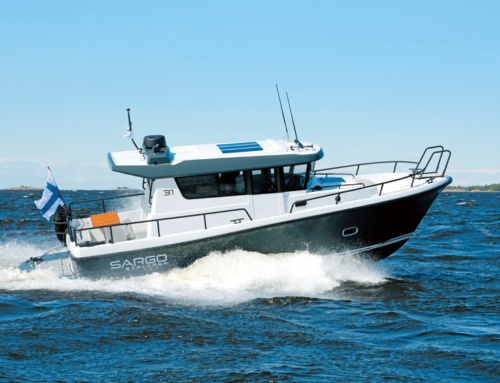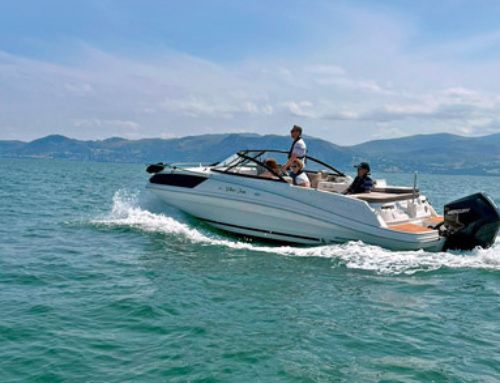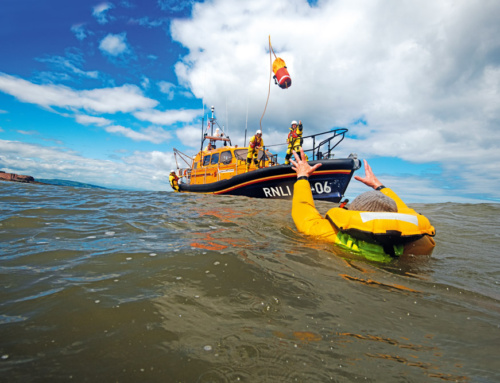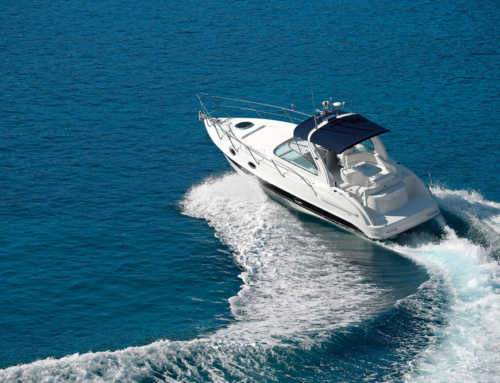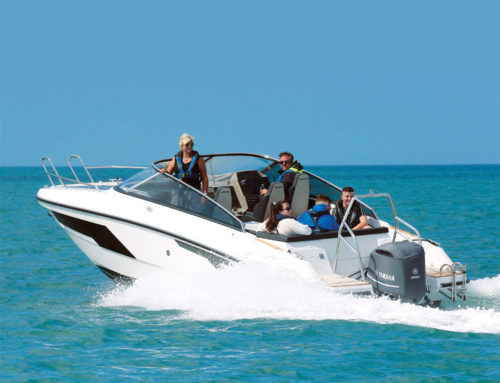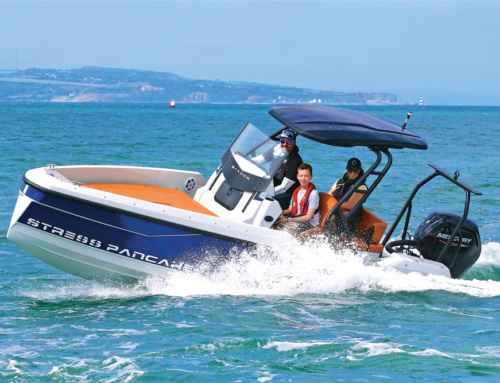When it comes to venturing offshore and the world of endurance boating, few have more experience than Mike and Dave Deacon aboard their famous Hot Lemon Scorpion RIBs. Who better, then, to give their top tips for successful offshore voyaging?
Father and son duo Mike and Dave Deacon have spent many years racing various versions of their Scorpion RIB Hot Lemon, not only in the UK, but also in France, Belgium and Gibraltar. To this day, they still hold several world records for long-distance endurance runs, and their famous Hot Lemons have circumnavigated Britain four times as well as successfully striking out to St Kilda, the most westerly outpost of all the British Isles. Holding pretty much every title there is to be gained, Mike and Dave make up one of the most respected teams in the pastime of offshore boating. Who better, then, to provide us with essential guidance on long-distance navigation, adventure boating and offshore endurance-style racing? Let’s now benefit from their experience as they provide us with their recipe for success and top six tips for successful offshore voyaging …
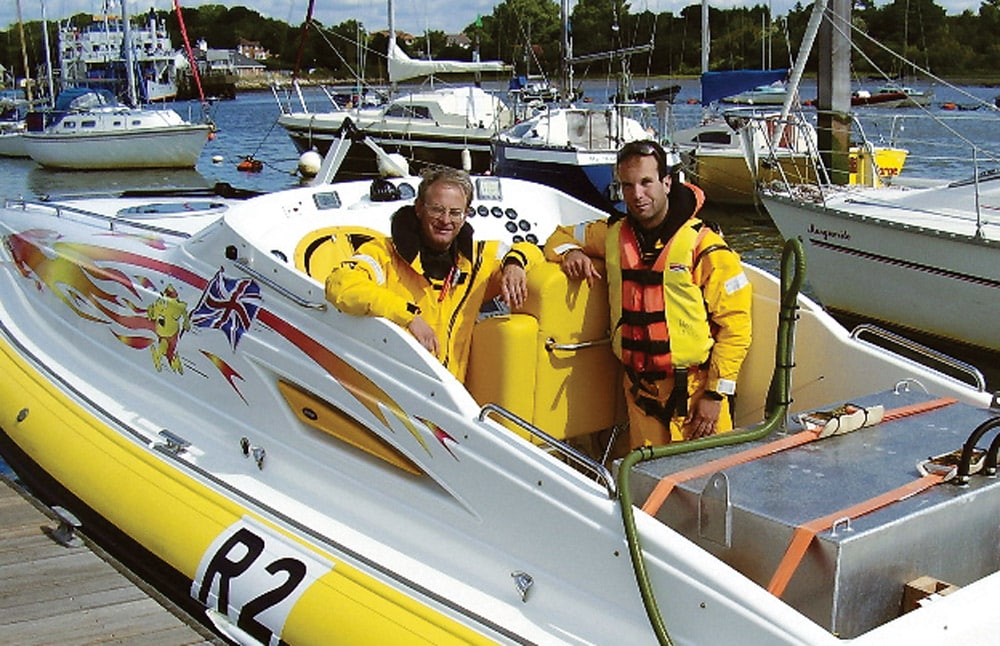
Dave and Mike Deacon – Round Britain 2005
It’s been said before in this series of articles: ‘Hope for the best, prepare for the worst’. With this in mind, in terms of offshore navigation, we always had three choices on board, so when an aluminium bracket failed offshore causing the loss of two independent chartplotters, we completed a Round Britain run using a handheld GPS and written course notes, plus a swung compass and charts. Trust your instruments – we came within 30 seconds of running up a beach at 50 knots as navigator Mike ignored nav alarms after visually mistaking a headland off Scrabster for the Island of Stroma 10 miles further ahead! We always carried a good road map so we could choose an emergency harbour with decent lorry access rather than an inaccessible beach.
Carry spare life jacket gas cylinders or spare jackets. We used both of these when a crewmember fell overboard and their life jacket inflated a minute after they climbed back on board.
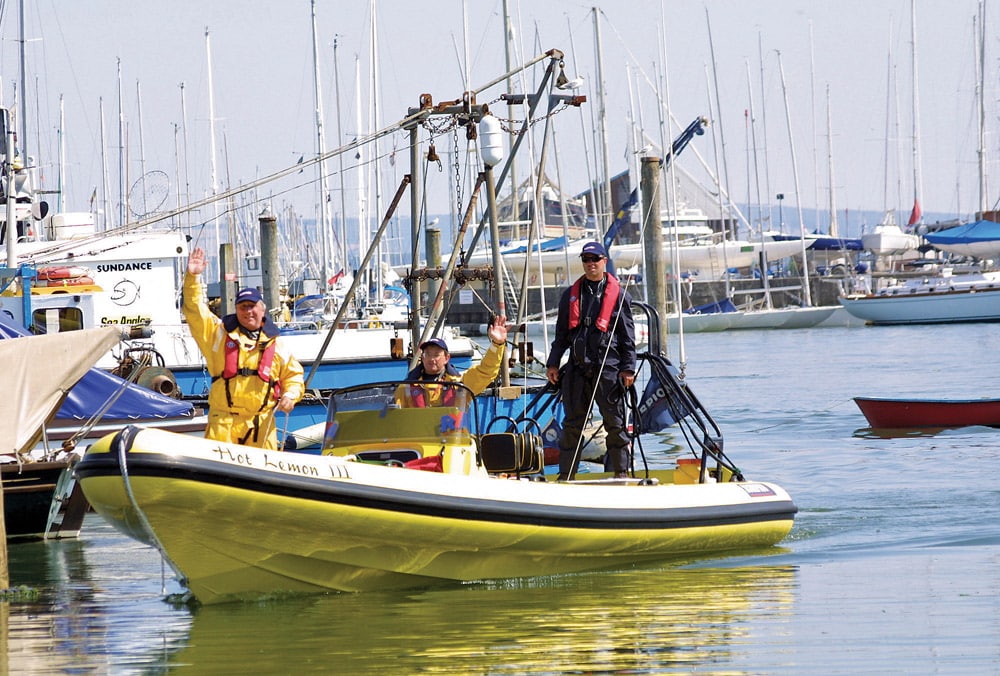
Hot Lemon 3 built by Graham Jelley – RB Record 2000
Sea state is often more important than wind strength, although they are related. On exposed coasts there can be little wind but heavy swell and dangerous waves, especially when they rebound off a headland (clapotic waves), and because wavelength influences the effect, this can happen surprisingly far offshore, although ‘deeper is usually better’. Study what has been happening further out at sea in previous days; note any offshore reefs or shallows to windward and what the tidal flow is during your passage. Be especially cautious when crossing harbour entrance bars.
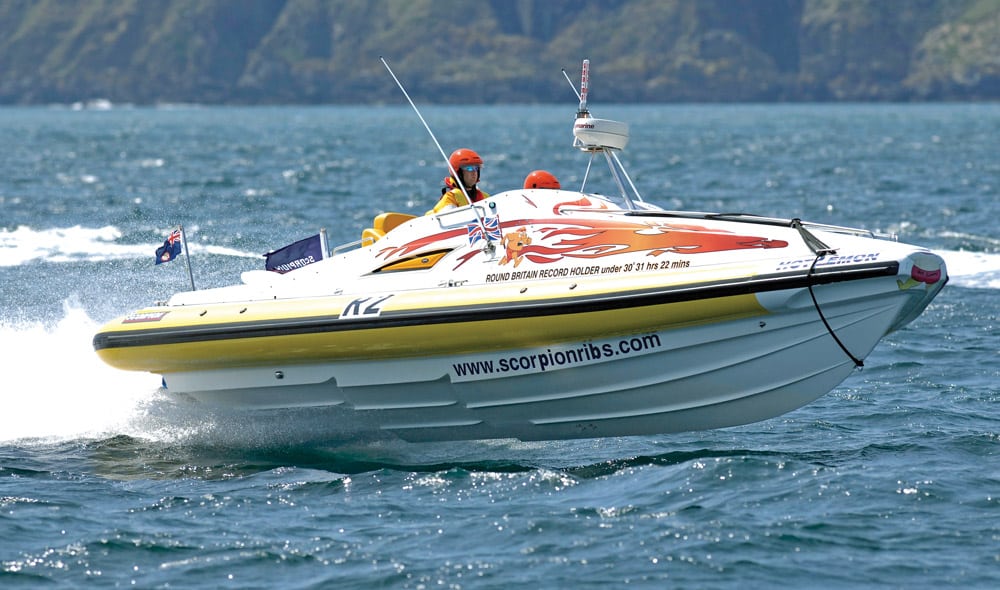
Hot Lemon 5
Beware of going too slowly in a planing hull – it is often good to slow down but there can be a tendency to slow too much as the waves increase. Learn how to read the sea and how to play the throttle, trims and helm – although ‘throttles go both ways’, a planing hull is not designed to act as a displacement hull. Try to look maybe five to ten waves ahead – your peripheral vision usually deals with what’s immediately in front of you, and rather than slow down too much it can be safer to tack your boat in head or following seas.
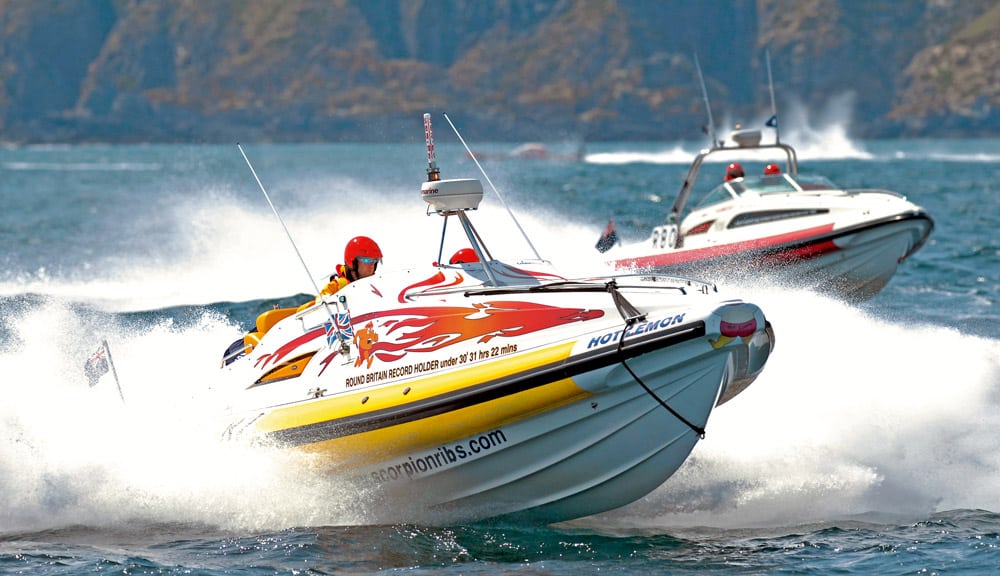
Hot Lemon 5
In challenging waves, always keep a few hundred revs in reserve – they might be needed to cope with an unforeseen sea or if needing to raise the bow running down into a trough. One of the most dangerous occasions in any powerboat is when running slowly before a following sea – if waves overtake the boat, you lose steerage and can easily broach. Remember to look behind you as well as ahead, and keep engine revs in hand so you can ‘run away’ before the seas.
Remain calm in rough conditions – stress inhibits the ability to think, and tension will result in harder impacts and exhaustion sooner. Learn to relax and trust in the ability of the boat and your instincts. ‘Flying’ a boat may feel exciting but you will make slower progress and possibility cause injury the more time your prop is out of the water.
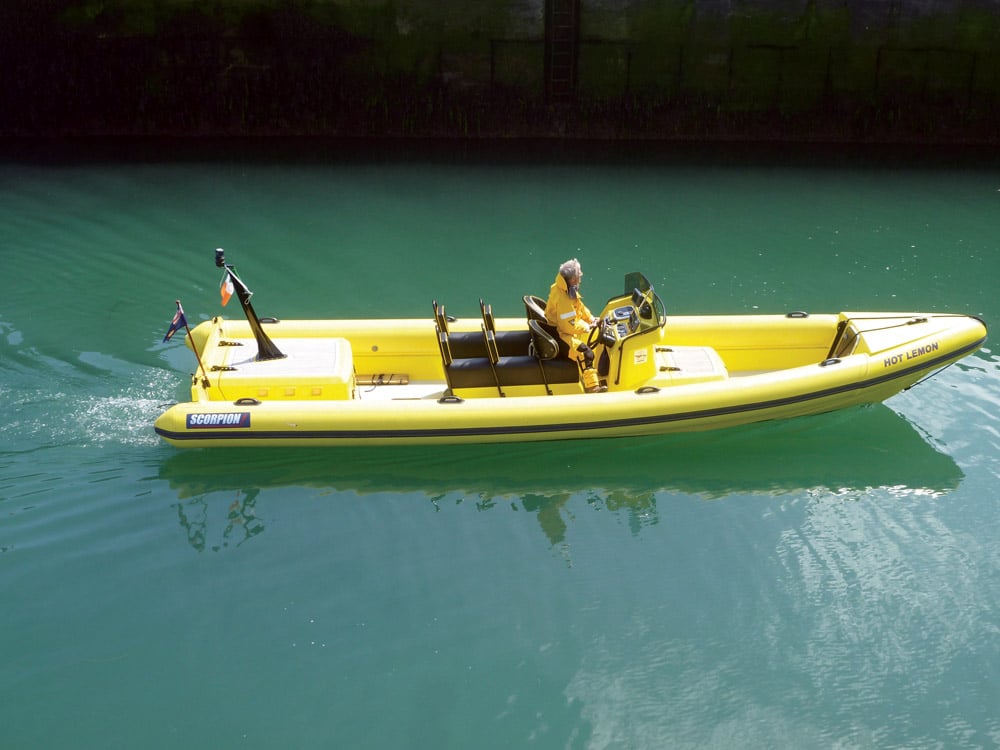
Hot Lemon 6 – 2013
As far as is reasonable, have means of survival on you as well as on the boat in case you’re in the water and separated from the boat. Wear a properly adjusted life jacket, and perhaps carry a VHF radio, a mini-flare pack and a modern AIS-enabled PLB. The list can be as long or short as you want it to be – your decision will decide whether you want to drown quickly, slowly or not at all …
Hot Lemon 5’s short equipment list for long-distance voyaging
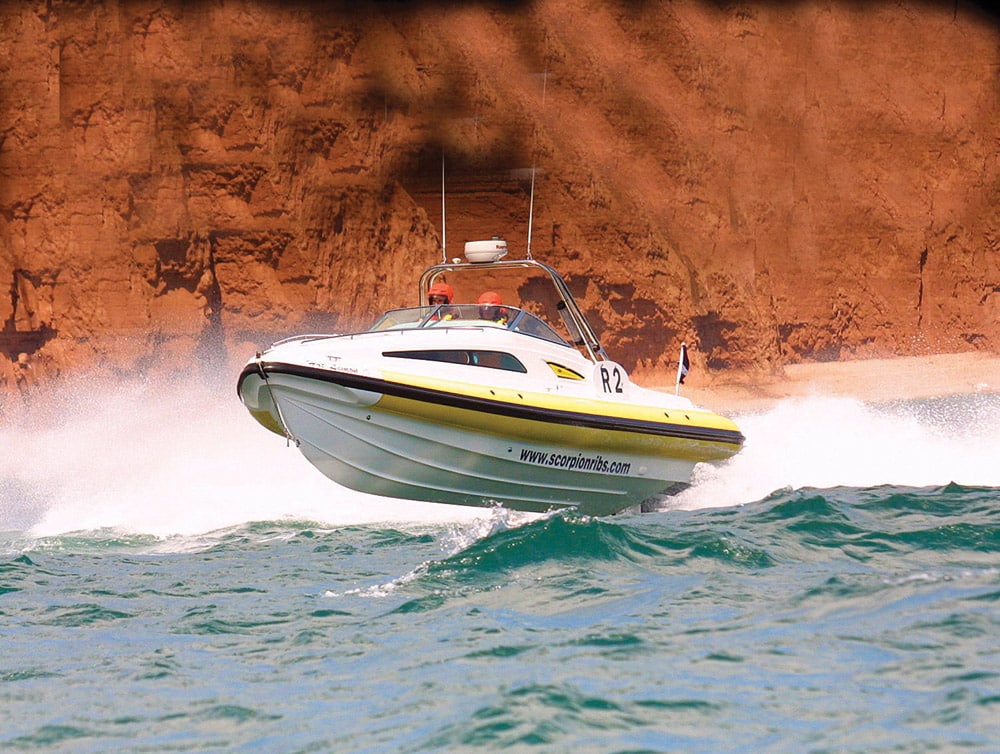
Hot Lemon 4 in Torquay – 2004
This is a small selection of the equipment carried on board during endurance runs. Many items have been omitted for brevity, but here are some key essentials:
- Life raft, kill cord and spares, tool kit, ratchet straps, duct tape.
- Offshore flare pack, fitted AIS send/receive plus AIS-enabled PLBs for each crewmember, fixed VHF DSC radio plus handheld VHF.
- Anchor and 50m line with 10m chain, sea anchor and drogue, strong tow line with suitable attachment point(s), serrated knife, torches (including red lens) and spare batteries, charts, fixed compass correctly adjusted.
- Navigation lights, foot pump, fire extinguishers, foghorns, first-aid kit, life jackets with splash hoods and whistles, helmets, goggles, gloves, waterproof clothing, basic provisions (food and water), mobile telephone and charger, radar reflector, spare propeller and fixings, engine belts, filters, oils and other engine liquids, foil blankets, tube repair kit, well-equipped grab bag.
Hot Lemon 5: Round Britain world record-holding RIB
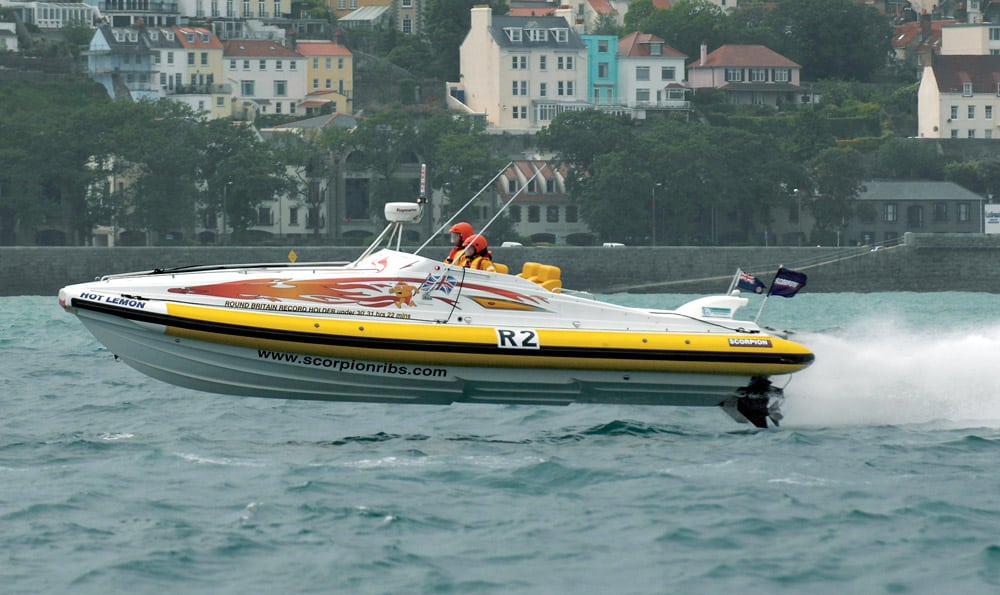
Learn to relax and trust in the ability of the boat and your instincts.
“Hot Lemon 5 was a 10m Scorpion Sting built in 2005 with the hull designed by David Marsh and the two hull steps designed by Lorne Campbell. She was built of standard GRP (no Kevlar or carbon fibre) but she had foam sandwich in her superstructure for lightness and strength. The luxury features usually found on the Scorpion Sting were omitted and, while she had no bunks, cooker or shower, she did have carpeting plus four extremely comfortable bolster seats with rise/fall squabs and a bench seat plus a sea toilet. The lay-up used on the hull was a GRP composite E-glass with a 12mm Herex cored deck, cabin top and engine box lid. With engines, outdrives and usual seagoing gear she had a dry weight of approximately 4000kg plus fuel. Things have now moved on, and for many years Scorpion have been using infusion moulding for even greater weight saving and strength.
We designed Hot Lemon 5 specifically to attempt the Round Britain world record for craft under 30ft (success in 2005 in 31 hours 22 minutes for 1363nm), and we used an angle grinder to shorten her bow by 4in to bring her into class.
The power units were two perfectly standard 4.2L 315hp Yanmar diesel engines with Bravo 1X outdrive legs fitted with Imco 4 ram external steering. Apart from very regular oil changes and a thorough annual service, for reliability the engines were ‘out of the box’ with no changes.
We used a range of propellers from a set of Hydromotive five-blade propellers of various pitches for weight carrying to a pair of Bravo four-blade 32.5in pitch for speed. All props were balanced and slightly sharpened. We also considered using larger engines but followed Lorne Campbell’s excellent advice and concentrated on maximising her power-to-weight ratio using foam sandwich, conventional GRP and standard engines. This power-to-weight ratio and the superb seakeeping of the hull were the reasons for Hot Lemon’s success – keep everything simple and standard, build the hull and engineering to the very best standards and cut the weight. The ability to maintain a high average speed on endurance runs was vital and was particularly important when carrying 1725L of fuel weighing in at close on 1.5 tonnes. Fuel was stored in the standard 900L under-deck tanks and we added deck tanks according to need. We used pumps to maintain trim as fuel was used and the deck tanks were plumbed directly into the main tank fillers. Fully loaded, she would run at 55 knots using 1.5L per nm.
Hot Lemon 5 was fitted with two GPS systems, twin VHF radios, two plotters, a radar, a radar reflector, an RTE (Radar Target Enhancer), a NAVTEX, floor- and dashboard-operated leg trim switches, trim tabs and various other bits and pieces. Shock mitigation flooring made the ride very soft. In the right conditions, Hot Lemon would run close to 65 knots, but her real strength was the superb ability of the Scorpion hull to comfortably maintain high average speeds in arduous conditions.” Mike Deacon

